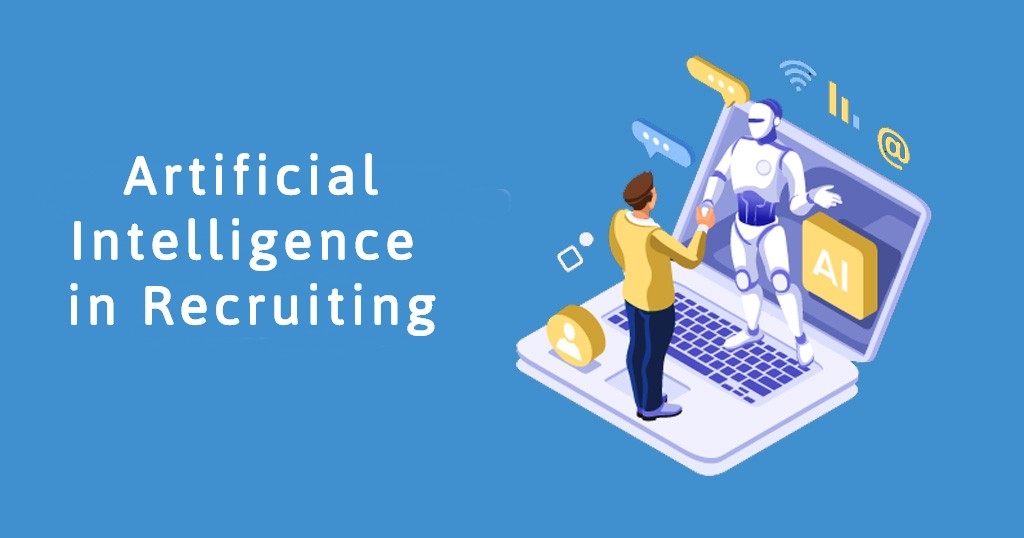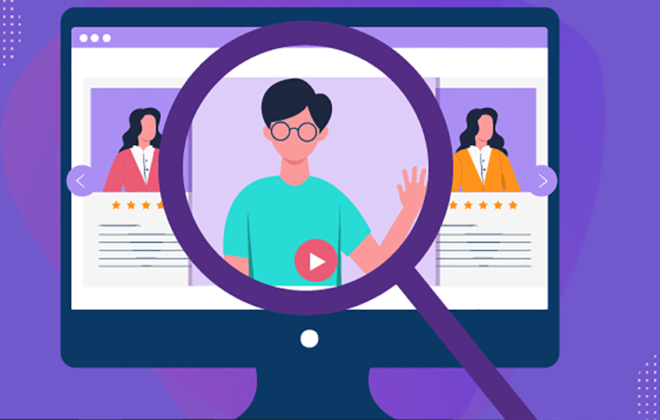Five Ways Artificial Intelligence Will Ease the Life of Recruiters
Recruiters are brimming with fear of obsoletion as Artificial Intelligence(AI) makes its way into the recruitment industry. And if you are also one of those recruiters, let us tell you that it’s not an irrational fear. Not when AI continues to automate manual processes and eliminate related jobs.
But does that mean the recruitment industry doesn’t need human recruiters anymore?
Well, no.
In place of completely replacing humans with bots or automating the processes, artificial intelligence unifies technology and recruitment to ease the hiring process. It enhances the existing recruitment process by offloading manual or repetitive tasks that massively keep you occupied. This means you now have more time to invest in strategic roles that actually need your human brain and effort.
For instance, you can now invest time and effort in building candidate relationships than in screening thousands of resumes manually.
This is just one example. Artificial Intelligence has now trickled into every area of recruiting. Below is a list of five such intriguing AI use cases that are going to make your recruiting life easy in the future.
Five Ways How Artificial Intelligence Will Ease Life of Recruiters
1. Lift the Manual Screening Burden
![]()
On average, each corporate job offer attracts 250 resumes, among which 4 to 6 get shortlisted for interview and only one gets the job. This means you parse through 200+ resumes to filter 4-6 applications for a job. AI-led screening tools lift off this burden and automate the whole process of screening for you.
It screens through thousands of resumes in a short span of time and feeds on historical and existing candidate databases to learn about the filtering criteria. These tools pick on information such as the kind of candidates hired in the past, skills, and experience they had, their tenure with the company, and more to sift the applications.
After analyzing what best suits you and what doesn’t, AI screening tool grades the candidate applications from A to D, or Red to Green for you to choose the applicants according to your preferences.
2. Expanding Candidate Outreach
![]()
Searching for passive candidates has always been a hassle. According to the Linkedin Talent Report, 70% of the workforce consists of passive talents who reside in distant corners of the social media or professional networks.
Artificial Intelligence helps you reach these corners of the passive talent pool through keyword matching and programmatic job advertisement tools. These tools strategically display job ads on passive profile and gauge their interest on the same. Taking it a step further, many tools are also curating candidates’ profile information from different sources such as job portals, resume databases, social networks, and more to proactively assess if candidates are fit for the position and are open to new opportunities.
3. Assist Through Virtual Assistants & Chatbots
Earlier, gathering initial information for screening and interviews involved a series of calls to the candidates. The more candidates you want to screen, the greater number of calls you have to make. Apart from being time-consuming, this process demanded a lot of manual effort on your part. And any misplacement of information would mean losing on the candidate or calling them again to recollect the lost information.
Due to this, a lot of companies are now turning to Virtual Assistant and Chatbots to gather the initial level of candidate information. These chatbots are not only helping you collect information but are also helping candidates acquire all the relevant company and job information, beforehand. As a result, it takes the burden of answering hundreds of query calls every day off your shoulders.
Mya, Ideal, and Wade and Wendy are some of the most talked-about bots in the recruitment industry. These bots reduce a lot of your administrative tasks including,
- Collecting candidate information such as resume, contact information, work portfolio, etc.
- Asking screening questions about candidates’ experience, knowledge, and skills
- Categorizing and ranking applicant on metrics such as qualifications, engagement, or recent activity
- Answering FAQs about the job and the application process
In a recent survey by Allegis, conducted over 200 job seekers, 58% of candidates said they are comfortable interacting with AI and recruitment chatbots in the early stages of the application process. An even larger percentage – 66% – were comfortable with AI and chatbots taking care of interview scheduling and preparation.
4. Automate Interviews and Follow-ups
Another recruiting field that Artificial Intelligence is entering into is scheduling and conducting interviews. Tools like Mya, Autoview, and HireVue, are now taking interviews on behalf of companies. Taking the interview analysis a notch higher, these tools are analyzing candidates through facial expressions, gestures, sentiments of voice and text, knowledge about the role and personality.
Moreover, software like x.ai is also helping recruiters automatically schedule and follow up for the interviews. It automates the most tedious parts of scheduling — finding compatible times to meet with large groups, sending follow-ups, and rescheduling meetings.
5. Refine Recruiting Language
A study conducted on gendered language in job advertisements/descriptions demonstrated that gender bias is still prevalent in the recruiting industry.
Study compared the language in job advertisements for both male-dominated and female-dominated fields. They found that,
Job advertisements within male-dominated areas contained greater masculine wording than advertisements from female-dominated areas.
It suggested that the presence of more men in a field is a strong predictor for masculine gendered language in job descriptions. In fact, there’s a strong correlation between the language you use on your JDs and the gender you hire for that role.
![]()
Textio, an augmented writing tool focuses on uprooting these biases from the recruiting language, be it regular conversations or job descriptions. This tool guides you in real-time to converse in a confident and unbiased language. After drafting your JDs, you can upload the content on Textio to assess the quality and bias of the language used. Focused on augmenting the recruiting conversation, it ensures you use a consistent brand language over all your brand platforms.
Read More: 4 Inspiring AI-HR Trends That You Must Watch Out for in 2020
Subscribe For Updates
Categories
- Accountant
- AI
- Automation
- Awards and Recognitions
- Blue Collar Staffing
- Burnouts
- Campus Recruiting
- Cloud
- Co-Ops agreements
- Company Culture
- Compliance
- contingent workforce
- Contingent Workforce
- COVID-19
- Cyber Security Staffing
- Data Strategy
- Digital Transformation
- direct sourcing
- Distributed Workforce
- Diversity
- Diversity & Inclusion
- Economy
- Events & Conferences
- fleet industry
- Gig Economy
- Girls in Tech
- Global Talent Research and Staffing
- Government
- Healthcare
- Healthcare Staffing
- Hiring Process
- Hiring Trends
- Home Helathcare
- HR
- HR Practices
- HR Tech
- IT
- Labor Shortages
- Life Science
- Local Governments
- News
- Nursing
- Payroll Staffing
- Public Sectors
- Recruiting
- Remote Work
- Skill Gap
- SMB Hiring
- Snowflake
- Staffing
- Staffing Augmentation
- Staffing Challenges
- Talent ROI
- Tech Staffing
- Technology
- Tips & tricks
- Total Talent Management
- UI/UX Design
- Uncategorized
- Veteran Staffing
- Veterans Hiring
- Veterans Hiring
- Workforce Management
Recent Posts
- Automation in Recruiting: From Chatbots to Predictive Screening
- Gig Economy Expansion: The Impact on Talent Pools and Business Models
- Skills-Based Hiring: Why Credentials Alone Don’t Cut It in 2025
- Procurement 3.0: AI & Intelligent Automation in 2025
- Q3 Is Here: Is Your Contingent Workforce Strategy Falling Behind?
Newsletter
Archive
- September 2025
- August 2025
- June 2025
- April 2025
- March 2025
- December 2024
- November 2024
- October 2024
- September 2024
- August 2024
- July 2024
- June 2024
- May 2024
- April 2024
- March 2024
- February 2024
- January 2024
- December 2023
- November 2023
- October 2023
- September 2023
- August 2023
- July 2023
- June 2023
- May 2023
- April 2023
- March 2023
- February 2023
- December 2022
- November 2022
- October 2022
- September 2022
- August 2022
- July 2022
- June 2022
- November 2021
- October 2021
- September 2021
- August 2021
- July 2021
- June 2021
- May 2021
- April 2021
- March 2021
- February 2021
- January 2021
- December 2020
- November 2020
- October 2020
- September 2020
- August 2020
- July 2020
- June 2020
- May 2020
- April 2020
- March 2020
- February 2020
- January 2020
- December 2019
- November 2019
- October 2019
- September 2019
- August 2019
- July 2019
- June 2019
- May 2019
- January 2019
- December 2018
- November 2018
- October 2018
- September 2018
- August 2018
- July 2018
- June 2018
- May 2018
- April 2018
- March 2018
- February 2018
- January 2018
- December 2017
- November 2017
- October 2017
- September 2017
- August 2017
- July 2017
- June 2017
- May 2017
- November 2016
- October 2016




